Have you ever tasted a mango so sweet and succulent that it leaves you craving for more? If you’re a fan of this tropical fruit, then there’s one place you need to visit – Guimaras, the mango capital of the world. This charming island is renowned for its vibrant mango plantations and the production of some of the best mangoes you’ll ever taste. But what makes Guimaras truly unique? And why is it considered the top mango destination? Let’s dive into this comprehensive guide and uncover the allure of the mango capital of the world.
Key Takeaways:
- Guimaras is known as the mango capital of the world.
- The island is famous for its vibrant mango plantations and delicious mangoes.
- Discover what sets Guimaras apart as the top mango destination.
- Uncover the unique mango-related delicacies of this tropical paradise.
- Plan your visit to Guimaras and indulge in the ultimate mango experience.
Picking the Perfect Mango
When it comes to selecting the perfect mango, there are a few key factors to consider. By paying attention to these tips for choosing mangoes, you’ll ensure a sweet and flavorful experience every time.
How to Pick Mangoes
First and foremost, look for mangoes that have a slight give when gently pressed. This indicates that the fruit is ripe and ready to be enjoyed. Avoid mangoes that feel too firm, as they may still need time to ripen. It’s all about finding that perfect balance of softness.
A gentle sniff near the stem of the mango can also reveal valuable information. A sweet and fragrant aroma is a telltale sign of a ripe mango. Take a moment to savor the delightful smell, and you’ll be rewarded with a delicious treat.
Selecting Ripe Mangoes
When it comes to color, ripe mangoes can vary depending on the variety. However, most ripe mangoes will have a beautiful greenish-yellow or reddish hue. Keep in mind that the color alone is not always a foolproof indicator of ripeness, so it’s essential to use all of your senses when selecting mangoes.
Lastly, pay attention to the stem of the mango. A slightly yielding stem is another sign of ripeness. Avoid mangoes with dry or shriveled stems, as they may have passed their prime.
Tips for Choosing Mangoes
To summarize, here are some tips to remember when selecting mangoes:
- Look for mangoes with a slight give when gently pressed.
- Sniff near the stem for a sweet and fragrant aroma.
- Consider the color, as most ripe mangoes will have a greenish-yellow or reddish hue.
- Avoid mangoes with dry or shriveled stems.
By following these tips, you’ll be able to pick the finest mangoes and indulge in their juicy sweetness. So next time you’re at the market or grocery store, put these tips into practice and enjoy the perfect mango every time.
Exploring Mango Varieties
Guimaras may be the mango capital of the world, but it’s not the only place with fantastic mango varieties. Mango enthusiasts can delight in exploring a plethora of mango varieties worldwide. Some popular picks include the Alphonso from India, known for its intense sweetness and delicate flavor, the Ataulfo from Mexico, a small mango with a sweet and tangy taste, and the Tommy Atkins from Florida, USA, widely available with firm flesh and mild sweetness. These are just a few examples of the incredible diversity of mangoes around the world.
When it comes to mango varieties, the world is your orchard. From tropical regions to subtropical climates, mangoes thrive in various environments, resulting in a wide array of flavors, textures, and appearances. Exploring different mango varieties is like embarking on a flavor-filled adventure, discovering unique tastes that range from tangy and tropical to sweet and succulent.
India, known for its love affair with mangoes, boasts a diverse selection of delightful varieties. The Alphonso, often referred to as the “King of Mangoes,” is considered one of the most sought-after varieties in the world. Its rich, buttery sweetness and smooth texture make it a favorite among mango connoisseurs.
The Alphonso Mango
“The Alphonso mango is a tropical treat, with its luscious sweetness and velvety texture. Its captivating flavor instantly transports you to the sunny shores of India.”
In Mexico, the Ataulfo mango reigns supreme. This small, golden-skinned fruit features a heavenly combination of sweetness and tanginess. Its soft, buttery flesh makes it perfect for enjoying fresh or adding to tropical salads and salsas.
The Ataulfo Mango
“The Ataulfo mango dazzles with its sunny appearance and vibrant flavor. Its irresistible sweetness and tangy notes create a harmonious tropical symphony.”
For those seeking a more familiar mango variety, the Tommy Atkins from Florida stands out with its smooth, juicy flesh and mild sweetness. This versatile mango is widely available, making it a popular choice for everything from fresh snacking to using in smoothies and desserts.
The Tommy Atkins Mango
“The Tommy Atkins mango is a reliable classic, consistently delivering a delightful balance of sweetness and juiciness. Its versatility makes it a staple in mango-loving households worldwide.”
These three mango varieties are just a glimpse into the world of mangoes. From the vibrant hues of the Kesar from India to the juicy goodness of the Kensington Pride from Australia, each variety brings its own unique characteristics and flavors to the table. Exploring mango varieties is a delicious journey that opens up a whole new world of tropical indulgence.
Storing Your Mango Treasure
Once you’ve selected your perfect mangoes, it’s crucial to store them properly to ensure maximum enjoyment. Here are some tips for storing mangoes and preserving their freshness:
1. Storing Unripe Mangoes
If your mangoes are not yet ripe, you can store them at room temperature for a few days until they ripen.
Tip: to accelerate the ripening process, place the unripe mangoes in a brown paper bag along with an apple or banana. These fruits release ethylene gas, which speeds up the ripening of mangoes.
2. Storing Ripe Mangoes
Ripe mangoes should be stored in the refrigerator to slow down further ripening.
Tip: place your ripe mangoes in a plastic bag or an airtight container before placing them in the refrigerator. This will help maintain their moisture and prevent them from drying out.
3. Storing Cut Mangoes
If you’ve already cut your mangoes, it’s important to store them properly to maintain their freshness.
Tip: tightly wrap the cut mangoes in plastic wrap or place them in an airtight container before storing them in the refrigerator. This will help prevent them from drying out and keep them fresh for 2-3 days.
By following these storage tips, you can ensure that your mangoes stay fresh and delicious for longer, allowing you to enjoy their sweet and juicy flavor whenever you desire.
| Mango Storage Tips |
|---|
| Store unripe mangoes at room temperature. |
| Place unripe mangoes in a brown paper bag with an apple or banana to accelerate ripening. |
| Store ripe mangoes in the refrigerator to slow down further ripening. |
| Wrap cut mangoes tightly in plastic wrap or store them in an airtight container in the refrigerator for 2-3 days. |
Follow these simple tips to ensure that your mango treasure stays fresh and delicious for as long as possible.
Fun Facts about Mangoes
Mangoes are not only delicious, but they also have a fascinating history and unique characteristics.
- Did you know that there are over 1,000 varieties of mangoes grown worldwide? From the Alphonso to the Tommy Atkins, each variety offers its distinct flavor and texture, delighting taste buds around the globe.
- The largest recorded mango weighed a whopping 5 pounds! That’s like holding a small melon in your hand. Mangoes come in various sizes, from petite to jumbo, but the deliciousness remains the same.
- Mangoes are nature’s vitamin bombs. They are a good source of vitamins A and C, which are essential for maintaining a healthy immune system and promoting healthy skin. Mangoes are also rich in fiber, which aids digestion and supports overall gut health.
- In some cultures, mango leaves are considered auspicious. These leaves are used in traditional ceremonies and decorations, symbolizing prosperity and well-being. The vibrant green leaves add a touch of beauty to festive celebrations.
- Contrary to popular belief, the pit of a mango is not poisonous. Inside the mango pit, you’ll find a seed that can be germinated to grow your very own mango tree. It’s a satisfying way to enjoy fresh mangoes straight from your backyard.
These fun facts add an extra layer of appreciation for the beloved mango, making it even more enticing and intriguing.
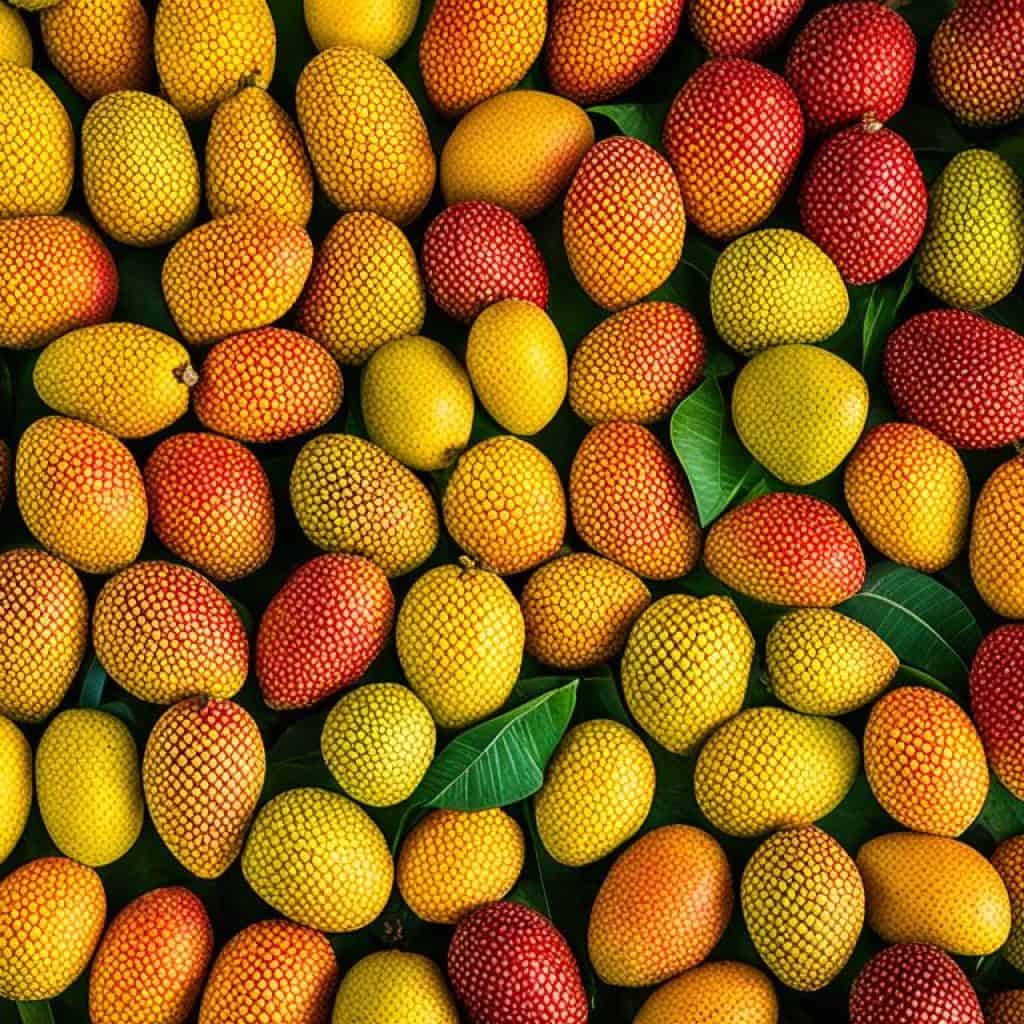
The Mango Capital of India
While Guimaras holds the title of the mango capital of the world, there are other regions that have made significant strides in mango production. One such region is Krishnagiri, often referred to as the mango capital of India. With its vast mango farms and thriving industry, Krishnagiri plays a major role in the cultivation of this luscious fruit.
Located in the state of Tamil Nadu, Krishnagiri is known for its abundant mango plantations and leading mango production. The district produces a staggering 300,000 tonnes of mangoes annually, making it a hub for mango farming, processing, and juicing. This remarkable output showcases the region’s commitment to mango cultivation and its status as a prominent player in India’s mango industry.
Mango Farms in Krishnagiri
The mango farms in Krishnagiri span across vast expanses of land, showcasing different varieties of mangoes. These farms are meticulously maintained and are a testament to the expertise and dedication of mango farmers in the region. The fertile soil, coupled with favorable climatic conditions, creates an ideal environment for growing high-quality mangoes.
One prominent mango variety grown in Krishnagiri is the Alphonso mango, also known as the “King of Mangoes.” Alphonso mangoes are renowned for their rich, sweet flavor and creamy, tender texture. These delectable mangoes are highly sought after in India and abroad, making them a prized export product.
“Krishnagiri’s mango farms are a testament to the region’s dedication and expertise in mango cultivation. The bountiful harvests and high-quality mangoes showcase the region’s valuable contribution to India’s mango industry.”
Mango Processing and Juicing Industry
The mango industry in Krishnagiri goes beyond cultivation. The region is also home to numerous mango processing and juicing units. These facilities employ advanced techniques to process the mangoes and extract their flavors to create a wide range of mango-based products, including mango pulp, mango juice, and mango-flavored desserts.
The mango processing and juicing industry in Krishnagiri plays a crucial role in preserving the mangoes’ taste and extending their shelf life. Through innovative methods, the industry ensures that the bountiful mango harvests are enjoyed by mango lovers throughout the year, both locally and internationally.
The Economic Impact of Mango Production in Krishnagiri
The thriving mango industry in Krishnagiri has significant economic implications for the region and the state of Tamil Nadu. Mango cultivation and related activities provide employment opportunities for thousands of people, ranging from farmers and laborers to processing unit workers and traders.
Furthermore, mango production contributes to the region’s overall economic growth by generating substantial revenue through exports and domestic sales. The success of Krishnagiri’s mango industry has put the district on the map as a leading player in India’s agricultural sector and boosted its recognition as the mango capital of the country.
| Mangoes | Production (in tonnes) |
|---|---|
| Alphonso | 150,000 |
| Banganapalli | 90,000 |
| Kesar | 45,000 |
| Other Varieties | 15,000 |
The table above showcases the production figures for some of the prominent mango varieties grown in Krishnagiri. The data illustrates the district’s significant contribution to India’s mango production, reinforcing its standing as the mango capital of India.
The Quirky Province of Guimaras
Guimaras is not only known for its mangoes; it’s also a charming and unique province worth exploring. From its vibrant Mango Festival to its picturesque beaches and historic landmarks, Guimaras offers a range of attractions for visitors to enjoy. The province has a distinct charm and character that sets it apart as one of the quirkiest destinations in the Philippines.
One of the unique attractions in Guimaras is the Trappist Monastery, a peaceful retreat where visitors can enjoy the serene surroundings and purchase delicious products made by the Trappist monks, such as mango jam and piña colada jam. Another quirky spot is the Roca Encantada, a Spanish colonial mansion built on a rocky cliff overlooking the sea. This enchanting mansion is now a museum that showcases Guimaras’ rich history.
For nature lovers, a visit to Alubihod Beach is a must. The crystal-clear waters, white sand, and stunning rock formations make it a beautiful place to relax and take in the tropical ambiance. Don’t miss the opportunity to go island hopping and explore the nearby islets, each with its own unique charm.
“Guimaras is a hidden gem in the Philippines, offering a blend of history, culture, and natural beauty. It’s the perfect destination for those seeking something off the beaten path.”
For those looking for a taste of adventure, Guimaras has a Zipline Adventure that offers breathtaking views of the island’s lush landscape. This exhilarating experience is sure to get your adrenaline pumping.
To further immerse yourself in Guimaras’ quirky culture, make sure to attend the annual Mango Festival. This vibrant event celebrates the province’s mango industry and features street performances, live music, traditional dances, and of course, an abundance of mouthwatering mangoes.
With its unique attractions and laid-back atmosphere, Guimaras is a quirky province that appeals to all types of travelers. Whether you’re seeking relaxation on the beach, exploring historical sites, or indulging in delicious mango treats, Guimaras has something for everyone.
| Unique Attractions in Guimaras | Description |
|---|---|
| Trappist Monastery | A peaceful retreat where visitors can purchase delicious products made by the Trappist monks. |
| Roca Encantada | A Spanish colonial mansion turned museum, offering breathtaking views of the sea. |
| Alubihod Beach | A stunning beach with crystal-clear waters, white sand, and beautiful rock formations. |
| Island Hopping | An opportunity to explore the nearby islets and their unique charm. |
| Zipline Adventure | An exhilarating experience that offers breathtaking views of Guimaras’ lush landscape. |
| Mango Festival | An annual celebration of Guimaras’ mango industry with vibrant street performances and an abundance of mangoes. |
Guimaras Travel Facts
Before embarking on a journey to Guimaras, it’s helpful to know some essential travel facts. Guimaras is renowned for its mangoes, and these sweet fruits are not just a gimmick – the island is filled with mango plantations. Beyond mangoes, Guimaras offers biking opportunities, stunning beaches, and various other attractions. Additionally, Guimaras remains a hidden gem, relatively undiscovered by tourists, making it an ideal destination for those seeking a more authentic travel experience.
How to Get to Guimaras
Traveling to Guimaras is a breeze, with two main entry points: Iloilo City and Pulupandan. While Guimaras doesn’t have an airport, ferry transport is the most popular and convenient way to reach the island.
If you’re coming from Iloilo City, you can catch fast boats from Parola Wharf. These boats will take you to Jordan Wharf in Guimaras, offering a scenic journey across the water.
For those traveling from Bacolod, boats depart from Pulupandan Wharf, arriving at a pier on the east side of Guimaras. This option allows visitors from Bacolod to access the island easily.
Before your trip, it’s recommended to check the ferry schedules and arrive at the designated wharfs in a timely manner. By doing so, you can ensure a smooth and hassle-free journey to Guimaras.
Guimaras Ferry Schedule
| Route | Departure Point | Arrival Point | Schedule |
|---|---|---|---|
| Iloilo City to Guimaras | Parola Wharf | Jordan Wharf | Daily, multiple departures from 6:00 AM to 6:00 PM |
| Bacolod to Guimaras | Pulupandan Wharf | Pier on the east side of Guimaras | Daily, multiple departures from 7:00 AM to 6:00 PM |
As highlighted in the table above, there are multiple daily departures from both Iloilo City and Bacolod, providing flexibility for travelers.
Whether you choose to embark on the Iloilo City or Bacolod route, the ferry journey offers beautiful views of the surrounding waters, setting the stage for an exciting adventure on Guimaras Island.
Getting Around Guimaras
Exploring the beautiful island of Guimaras is a breeze, thanks to the straightforward transportation options available. While public transportation may be limited, tricycles serve as the main mode of transport, ensuring easy access to the island’s attractions. These motorized tricycles can take you on land tours, allowing you to explore Guimaras’ mesmerizing sights.
For those seeking a more adventurous way to navigate the island, renting a motorbike is a popular option. With a rented motorbike, you can have the flexibility to explore Guimaras at your own pace and discover hidden gems off the beaten path. It’s an excellent choice for thrill-seekers and those who enjoy the freedom of independent travel.
“Renting a motorbike in Guimaras allows you to explore the island’s charming villages, scenic landscapes, and breathtaking viewpoints with ease.”
Having your own vehicle can also save you time and provide a convenient travel experience, especially if you have a specific itinerary in mind. However, it’s important to note that Guimaras has limited ATM facilities, so it’s advisable to carry enough cash for transportation and other expenses during your exploration.
Tricycles in Guimaras
Tricycles are the most common mode of public transportation in Guimaras. These motorized vehicles, with a passenger sidecar attached to a motorcycle, can be found throughout the island. Tricycles offer a convenient and affordable way to get around and are an integral part of the local transportation system.
When hiring a tricycle, it’s essential to negotiate the fare before the journey begins. As tricycles typically serve specific routes, it’s advisable to communicate your destination to the driver to ensure they can accommodate your request.
Motorbike Rentals in Guimaras
For those who prefer more independence and adventure, renting a motorbike is a popular choice. There are several rental shops in Guimaras where you can find a range of motorbike options to suit your preferences.
Before renting a motorbike, ensure that you have a valid driver’s license and familiarize yourself with the local traffic rules and regulations. It’s crucial to prioritize your safety by wearing a helmet and practicing responsible riding throughout your journey in Guimaras.
| Transportation Option | Pros | Cons |
|---|---|---|
| Tricycles | Convenient and widely available Affordable fare Access to various destinations |
Fixed routes and shared rides Dependent on driver availability Limited capacity for luggage |
| Motorbike Rentals | Flexibility and independence Ability to explore at your own pace Access to off-the-beaten-path destinations |
Requires a valid driver’s license Responsibility for fuel and maintenance Weather conditions may impact riding experience |
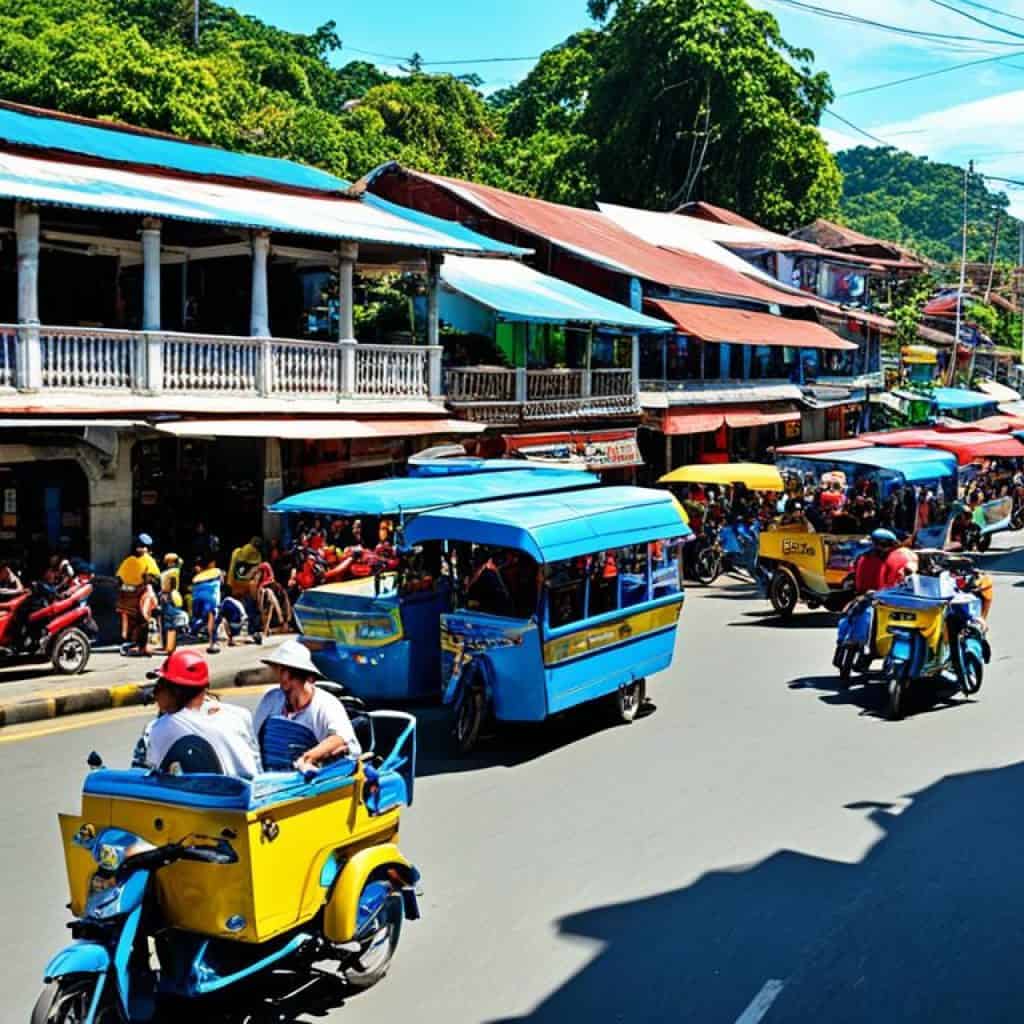
Exploring Guimaras by tricycle or renting a motorbike offers unique and exciting ways to immerse yourself in the beauty of the island. Whether you choose the convenience of tricycles or the freedom of motorbike rentals, both transportation options will allow you to experience the charm and wonders of Guimaras to the fullest.
Where to Stay in Guimaras
Guimaras offers a range of accommodations to suit different preferences and budgets. Whether you’re looking for a cozy budget stay or a luxurious resort, you’ll find options that cater to your needs. The main town of Jordan is a popular area to stay as it provides convenient access to various attractions and amenities.
If you’re seeking budget-friendly accommodations, there are several guesthouses and inns in Jordan that offer comfortable rooms at affordable prices. These budget stays provide a great opportunity to experience Guimaras without breaking the bank.
For those who prefer a bit more luxury, there are mid-range resorts available in Jordan as well as in other areas of Guimaras. These resorts offer comfortable rooms with modern amenities such as swimming pools, restaurants, and recreational facilities. You can enjoy a tranquil vacation while being surrounded by the island’s natural beauty.
Another popular option for accommodations is Alubihod Beach in Nueva Valencia. This beautiful beach area is known for its stunning resorts that offer breathtaking views of the ocean. Staying here provides easy access to the beach and the opportunity to explore nearby islands through island hopping tours.
When planning your trip to Guimaras, it’s advisable to book accommodations in advance, especially during peak seasons or festivals. This ensures that you secure the best place to stay and avoid any last-minute inconveniences.
Comparison of Accommodations in Guimaras
| Accommodation Type | Location | Amenities | Price Range |
|---|---|---|---|
| Budget Stays | Jordan | Basic facilities, comfortable rooms | Low |
| Mid-Range Resorts | Jordan, Nueva Valencia | Swimming pools, restaurants, recreational facilities | Medium |
| Beach Resorts | Nueva Valencia (Alubihod Beach) | Beachfront views, water sports, island hopping tours | High |
Island Hopping and Land Tours in Guimaras
Guimaras offers a plethora of opportunities to explore its awe-inspiring attractions through both island hopping and land tours. For those seeking adventure, island hopping tours in the southern part of the island, particularly in Nueva Valencia, are a must. These tours will take you to pristine beaches, captivating caves, and hidden coves, allowing you to immerse yourself in the island’s natural wonders. One of the highlights of the island hopping experience is visiting the Taklong Marine Reserve, renowned for its powdery white sand beach and enchanting mangrove forest trail, offering a remarkable encounter with nature.
On the other hand, land tours in Guimaras allow visitors to discover the island’s rich history and cultural heritage. Explore historic landmarks that tell captivating stories of the past, visit lighthouses that offer breathtaking panoramic views of the surrounding landscapes, and bask in the serenity of Guimaras’ beautiful beaches. The land tours provide a comprehensive experience that showcases Guimaras’ natural beauty and allows you to connect with its cultural roots.
Whether you choose to embark on an island hopping adventure or delve into the island’s scenic landscapes through land tours, exploring Guimaras is an experience that will leave you mesmerized. With each journey, you’ll unravel the hidden gems and unique attractions that make Guimaras a truly remarkable destination.
Must-Visit Spots in Guimaras
During your island hopping and land tours in Guimaras, make sure to include these must-visit spots in your itinerary:
- Alubihod Beach: A picturesque beach in Nueva Valencia, perfect for swimming, snorkeling, and enjoying the sun.
- Guisi Lighthouse: A historic lighthouse offering stunning views of Guimaras’ coastline and neighboring islands.
- Trappist Monastery: A tranquil place where you can find locally-made products such as mango jams and preserves.
- Balaan Bukid Shrine: A hilltop shrine that offers a panoramic view of the island and serves as a place for prayer and reflection.
- San Lorenzo Wind Farm: A wind farm with giant turbines that provide a unique and picturesque backdrop.
- Smallest Plaza: A tiny plaza in Jordan that holds the Guinness World Record for being the smallest plaza in the world.
These are just a few of the many remarkable spots that Guimaras has to offer. Each attraction has its own charm and allure, ensuring that your island hopping and land tour experiences are filled with delightful surprises.
Plan your island hopping and land tours in Guimaras today and immerse yourself in the island’s breathtaking beauty, rich history, and vibrant culture. Create memories that will last a lifetime as you explore the must-visit spots that make Guimaras a truly remarkable destination.
Best Time to Visit Guimaras Island
Guimaras Island is a tropical paradise that offers a delightful escape for travelers looking to immerse themselves in the beauty of nature. To make the most of your visit, it’s essential to consider the ideal time to explore Guimaras, the festivals and events that take place, and the peak season when attractions may be crowded.
Guimaras Festivals and Events
The highlight of the Guimaras calendar is the Manggahan Festival, which is celebrated in May. This festival is a vibrant showcase of Guimaras’ cultural heritage and its pride as the mango capital of the world. During the Manggahan Festival, visitors can experience the colorful parades, traditional music and dance performances, and indulge in a wide variety of mango-themed culinary delights.
“The Manggahan Festival is a fantastic opportunity to immerse yourself in Guimaras’ unique culture and witness the locals’ passion for their mangoes.”
Aside from the Manggahan Festival, Guimaras also hosts other cultural and religious events throughout the year. These events provide a glimpse into the local traditions, allowing visitors to engage with the warm and welcoming Guimarasnons.
Ideal Time to Visit Guimaras
The ideal time to visit Guimaras depends on your preferences. If you want to experience the vibrant energy of the Manggahan Festival and witness the festivities firsthand, then planning your visit in May is highly recommended.
However, it’s important to note that during the festival period, Guimaras attracts a significant influx of visitors from all over the country. This means that popular attractions and accommodations may be crowded, and prices may be higher than usual.
If you prefer a quieter and more relaxed experience, it’s advisable to visit Guimaras outside of the festival period. The island’s attractions, such as the stunning beaches, pristine waterfalls, and historical landmarks, can be enjoyed without the large crowds.
The Peak Season in Guimaras
Peak season in Guimaras coincides with the Manggahan Festival in May. This is when tourists flock to the island to indulge in the mango festivities and explore its natural wonders. It’s essential to book your accommodations and plan your itinerary well in advance to secure your preferred choices.
| Pros of Visiting During Peak Season | Cons of Visiting During Peak Season |
|---|---|
|
|
|
|
Visiting Guimaras outside of the peak season allows for a more serene and authentic experience. You’ll have the chance to explore the island’s attractions at your own pace and enjoy the tranquility of its pristine beaches and lush landscapes.
Ultimately, the best time to visit Guimaras Island depends on your personal preferences for crowd sizes, festival experiences, and budget considerations. By considering the weather, festivals, and seasonal factors, you can plan a memorable trip to this mango paradise.
Conclusion
Guimaras, the mango capital of the world, offers a unique and delightful travel experience for mango lovers and adventurous travelers alike. With its vibrant mango plantations, indulgent mango-related delicacies, and stunning natural beauty, Guimaras truly embodies the allure of a tropical paradise.
Whether you’re captivated by the vibrant Mango Festival, embarking on thrilling island hopping adventures, or simply basking in the serenity of the island’s picturesque beaches, Guimaras promises an unforgettable journey filled with sweet memories.
This comprehensive guide has provided all the information needed to navigate Guimaras with confidence and make the most of this tropical treasure. So pack your bags, immerse yourself in the succulent flavors of Guimaras’ mangoes, and embark on a delicious journey in the mango capital of the world!
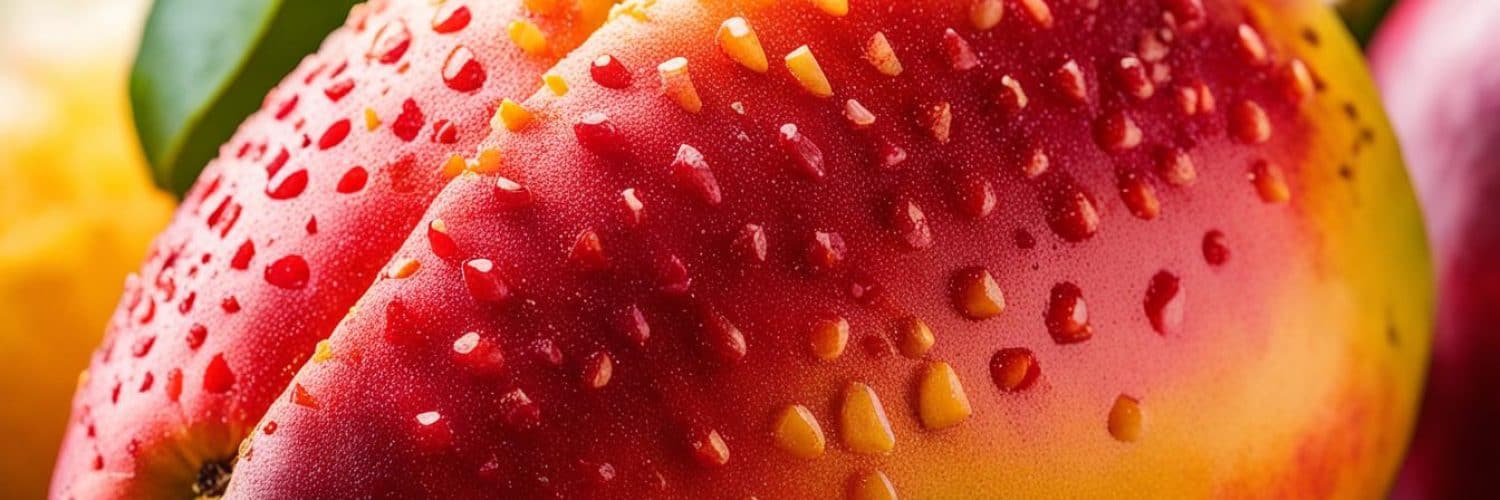
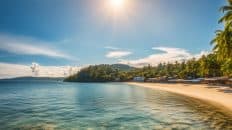
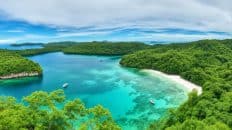















Add comment